More of the same this week: Ukraine has intensified its drone campaign to carry out some headline-grabbing strike or terror stunt to manage media perceptions and keep themselves looking viable and relevant.
A new strike on Russia’s Kresti airfield near Pskov last night was the latest in these efforts, not to mention continual attacks on Bryansk, Donetsk, attempted landings on Crimea, and many other such stunts which have no military value whatsoever.
But let’s talk about the Pskov strike briefly, as it has generated a lot of the usual gnashing of teeth and ‘patriot’ outrage. The airfield houses Russia’s Il-76 transport planes. The most up to date report claims upwards of 4 total were damaged in the strikes, with 2 of them potentially destroyed, as the following videos show:
However, new Western satellite photos from today appear to show little to no damage:
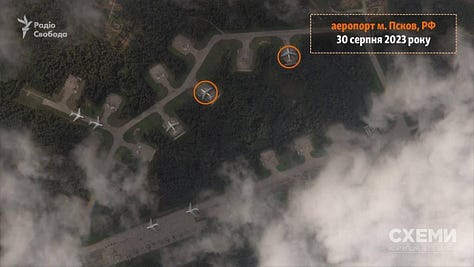
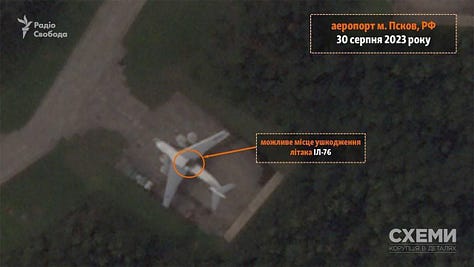
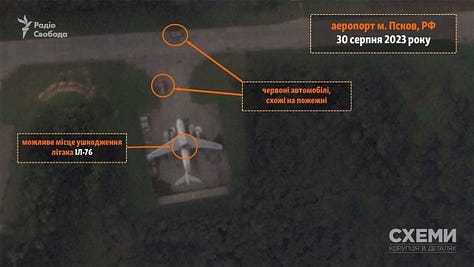
First let’s dispense with the fact that wikipedia gives the number of Russian Il-76s as 120 in active service, another 120 in reserve, with 20 on order and presumably being manufactured. So, while losing 2 or 4 may be a fairly bad hit, it’s not catastrophic. That’s not to even mention that these planes are not really even used in the SMO, as they’re transport planes and Russia does most of its logistics transport via rail and truck as most know. The Il-76s are mostly in Pskov as that’s where Russia’s famed 76th Pskov Paratroopers Airborne unit is stationed, and they use the planes to train with and jump out of.
The latest reports indicate that this operation was planned with British Mi6 for many months. Of course something that took months to coordinate will do some damage, particularly since the attack utilized a mass drone swarm of at least 21+ drones, according to some reports. They were said to possibly be the new Australian “card board” drones which have been in headlines recently:
These drones are nearly invisible to radar because cardboard is basically porous to radar waves. It shows that Ukraine and their Western controllers are constantly innovating and finding new ways to bypass Russia’s defenses. But Russia subsequently innovates and adapts as well, which is why you likely won’t see such a “successful” strike again for several more months.
There are big questions also about how these drones made it all the way to Pskov, 600km+ from the Ukrainian border. Some are claiming they came from Estonia. Many people have asked me recently, in general, how Ukraine conducts drone strikes on Russian territory. So allow me to use this circumstance to elucidate slightly on this matter.
Firstly, it must be known that it was already confirmed by Western media several times that Ukraine is sending saboteurs into Russia armed with drones which are launched from within Russian territory:
This is extremely easy to do. All you have to have is a sleeper agent or someone who crosses over into Russia legally under false pretenses and buys any number of legal-to-own off-the-shelf drones, like Chinese Mavics, etc. These drones can be fitted with explosives and flown right from the perimeter of the target. If you’re next to an airbase for instance, you can fly an FPV drone from the fence outside of the base right onto a plane and blow it up then leave by car long before authorities have figured out what even happened.
In fact, this exact thing has been confirmed in several of the cases, not only in strikes on Crimean air bases long ago but also on the attempted strike on the Russian A-50 AWACS plane in Belarus. The perpetrator flew an FPV drone from right outside the base but was then caught.
So we know for a fact that at least this one style of drone strike is confirmed as being actively used. The other more difficult tactic is sending larger drones like Ukrainian ‘Beaver’ drones over long distances from Ukrainian territory. How can they travel through hundreds of kilometers of Russian territory without being detected?
Two ways:
Firstly, they are made out of carbon fiber / light composite materials which are very difficult for radar waves to reflect from.
They fly relatively low which means, by virtue of the hard science of radar horizon, they simply cannot be detected until they’re only a few kilometers away from a radar installation.
For those who’ve followed my writings, you may recall several times that I’ve posted satellite photos showing how American SIGINT satellites can detect Russian radar installation positions simply based on their particular band emissions:
After that, all they have to do is a simple mathematical calculation: radar can only see an object of x size at y distance if the object is traveling at n altitude. Thus, they immediately know what the perimeters of the radar horizons are and where the drones need to travel in order to “skirt” the non-detection zones. They plan out a detailed pathway that’s programmed into the drone’s satellite navigation, and the drone follows a unique, serpentine path through the various radar edges.
An example of how that would look. Let’s say in the image below the red circles are all coverage zones of S-300 radars for objects that are flying at 500ft altitude or below. The yellow circles are coverage for anything flying from about 500ft to 5000ft altitude. And the purple circles cover 5000ft and upward:
This is a simplified version just to illustrate the idea. But as you can see, the layered defense is in fact overlapping, but only in the purple regions. Most air defense doctrine was created for cold war era tactics and combating high flying aircraft strike groups. If any normal plane flying at normal altitudes were to enter that zone, it would be detected as there are no gaps at all, if the plane is above 5000ft.
But since the drone is flying at a hypothetical 100ft, the only circle above that would detect it would be the red one. Or even if it’s flying at 1000ft, the yellow circle would detect it, but those have slight gaps in between. By studying the placement of the radars from signal intercepting satellites, Western partners can plot a route for Ukraine’s drones as seen by the blue lines, which snuggle in between the yellow circles and circuitously get to Moscow in the north.
Further, no matter how tightly you organize the radars there are many natural geographical, topographical, and simply urban features which limit radar detection in areas with higher city density. If the drone is flying at 100-200ft, but in the general region there are tons of hills, mountains, and buildings which are all anywhere from 200-1000ft high, then guess what? There will be obstructions to the radar waves everywhere, and limits to the coverage.
You can make up for this by placing many more systems everywhere but of course this is limited by how many systems and trained personnel you have available. Also you can get coverage from the air with a constant 24/7 overwatch of AWACS style planes with look-down radars, but it’s difficult to know how stretched Russia’s limited AWACS fleet is. They supposedly have only about ~15 A-50 planes, and recall that standard “mission readiness” rates for aircraft around the world is anywhere from 30-70%. This is defined as what percentage of aircraft are usable or flyable at any given time. The remainder is in a constant state of maintenance. For more advanced planes like F-22/F-35, the U.S. readiness rate has been as low as 30%, which means only 30% of the fleet can fly and operate.
So, with only around 15 AWACS it’s possible that only half that number, give or take, can really fly at any given time, and they have to be not only spread around the entire Ukrainian front, but some of them are required for the defense of the northern and eastern borders of Russia, to watch NATO around the Sea of Japan, Okhotsk, Bering Sea, etc. So theoretically Russia could have as little as 3-5 AWACS for Ukraine at any given time.
Keep in mind the mighty U.S. only has around ~30 official E-3 Sentry AWACS itself, so countries don’t typically have massive amounts of these. However, the U.S. also has some more RC-135s, E-8s, P-8 Orions, etc., which can help fill the gaps with somewhat similar capabilities. Russia fills the gaps by having Mig-31s patrol, which have powerful look-down mode Zaslon-M radars.
Lastly, I’d like to point out two important things. First of all, the Pskov airfield as I said has almost no military utility and is not even connected to the SMO. Thus it was targeted specifically due to this weakness, knowing that it’s not as well-defended because there’s nothing critical there. Notice Ukraine has hardly been able to scratch any of Russia’s actual important airfields like Engels, Dyagilevo, Olenya, or the ones near the frontline like Berdiansk, which houses dozens of frontline attack choppers. That’s because these are actually well-protected. So of course Ukraine chooses an obscure target it might stand a chance of hitting, and it still cost them “months” of preparation to do something militarily insignificant.
The second point is this. Many ignorant people have whined something along these lines: “Russian air defense is weak, if cheap Ukrainian drones managed to bypass them imagine what NATO would do if Russia ends up in a full-scale war with NATO in the near future! Russia wouldn’t last more than a hour/day/week/etc.”
But here’s the catch they miss: Ukraine actually has a major advantage which NATO would never enjoy in such a hypothetical conflict. You see, Ukraine gets to enjoy the luxury of NATO’s full satellite dominance without Russia’s ability to take those assets out due to not wanting to start WW3. That means Ukraine gets a “cheat code” where they can see all Russian assets and plan everything around that, bypassing Russian defenses, etc.
But if Russia was in a ‘full out war’ against NATO, guess which asset would be the first thing to come down? That’s right—NATO’s satellites wouldn’t exist. NATO would be blind and have no ability whatsoever to see Russia’s AD or other assets from afar, which means that even Ukraine’s puny drone strikes to Russia’s “deep rear” are far more than what NATO would be capable of in many ways.
Some argue: “But NATO has thousands of satellites, Russia can’t shoot them all down.” They conflate things like GPS and Starlink, which are small mass-produceable modules that dot the earth’s orbit. But in terms of actual enterprise level optoelectrical or E/O satellites, they have very few. The U.S. has a grand total of 5 giant optoelectrical satellites it relies on, each costing over $5 billion dollars. Those would come down in flaming wrecks to Russian A-235 Nudol missiles and U.S. would be blind. Sure, Russian satellites would likely come down too, but Russia is the only one that’s proven to know how to wage non-hightech war. NATO relies on both artillery and MLRS (HIMARS etc.) that can only shoot with satellite guided munitions. Russia has been accurately hitting Ukrainian targets with pencil-paper and sextant since the start of the war—they don’t need satellites.
And lastly, with all these comparisons to NATO lately, it’s funny that this clip from the documentary film Restrepo has hit the channels. It shows what the mighty American armed forces really look like in combat situations, from the Afghan war. After watching the heroism of Russian troops in Ukraine, you really think this army here would stand a chance? And this was before the army turned snowflake in the modern era—imagine how bad it is now:
As another general point, it’s clear that Russia is a highly adaptable armed forces. They learn from every mistake and continually implement changes to finetune operations. The enemy never sleeps either and is always innovating as well, so it’s a continuous power creep game of battlefield innovation.
As an example, Russia has already implemented several tricks to stop future Ukrainian naval drones from hitting the Kerch bridge:
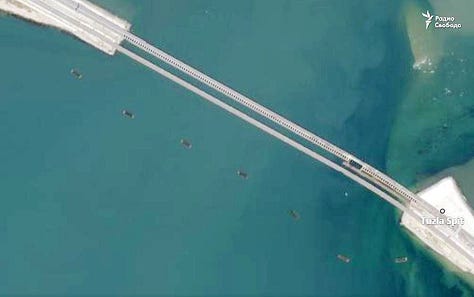

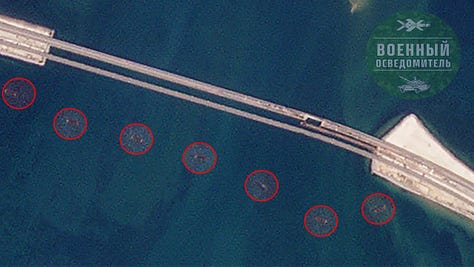
Along the Crimean bridge, 7 barges were immediately placed to form a protective barrier against unmanned kamikaze boats of the Armed Forces of Ukraine.
It is assumed that cables and chains will also be stretched between the barges, thereby creating a barrier for enemy BECs, which should fall into this trap in the event of another attempt to strike the bridge.
The design may seem strange and primitive, but being at night and under dense small arms fire, the drone operator may simply not notice where he is swimming or maneuver unsuccessfully in the process of evasion.
Reportedly not only has Russia stationed barges all along the bridge at exact intervals, to both watch for drones and possibly even suspend some kind of anti-drone netting between them. But also there’s word that Russia has begun sinking large old ships in the shallow bay there at strategic points to create a cheap natural barrier, funneling any potential drones into narrow, easily controlled chokepoints.
As further example, there’s been recent discussion I’ve written about in the realm of Russian counter-battery warfare and the complaints from certain frontlines that Russia needs to do more to improve its counter-battery capabilities as Russian troops complain that the only real, intractable threat they’re facing is incessant artillery barrages from the AFU. They can handle the AFU’s assaults but the artillery is wearing them thin.
So what does Shoigu do? The so-called “hated” defense minister visits the top manufacturers of Russian counter-battery systems and demands for them to increase production rates:
Remind me why “schizopatriots” claim he’s so terrible again? He’s clearly doing his job, converting battlefield demands into immediate actionable results through the chains of the MIC.
Lastly, while Ukraine achieved one quarterly strike with moderate damage against assets that don’t even have any bearing on the SMO, Russia in the same span of time has devastated the AFU’s actual military targets. Last night Kiev was struck a devastating blow with missiles and drones:
Some sources say a railroad yard in Kiev was hit. Many other targets throughout the country were likewise hit, in Cherkasy, Odessa, and Zhytomir.
And a day prior, Russian strikes blew away a train carrying Ukrainian gear to the front in Metsalovo station west of Donetsk city.
This is in addition to countless other strikes in the past week which continue goring Ukrainian infrastructure.
//
Let’s segue into the next section about developing events.
The theme continues to revolve around large new mobilizations slated for Ukraine’s near future—some believe as soon as early September:
Due to the huge losses, total mobilization will begin in Ukraine from the beginning of September. First of all, they will gather all men of military age from state and commercial enterprises. The same fate awaits students who arrive at their universities at the beginning of the academic year. The first" under the knife " will go to those areas that Kiev considers already lost for itself. Regions where the population is first ready to put "for meat", and then to level cities and villages with the face of the earth. These are Chernihiv, Sumy, Kharkiv, Dnipropetrovsk, Odessa, Zaporizhia and Mykolaiv regions.
This has been backed by the release of documents showing every major Ukrainian region gearing up for a wide-scale mobilization process. Like the following:
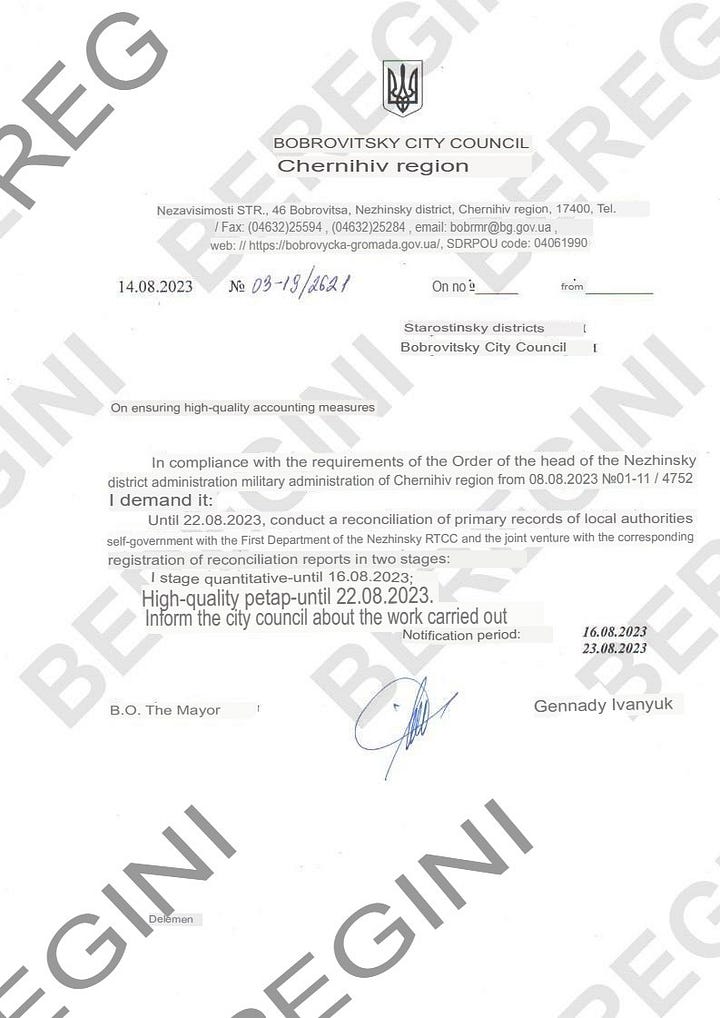

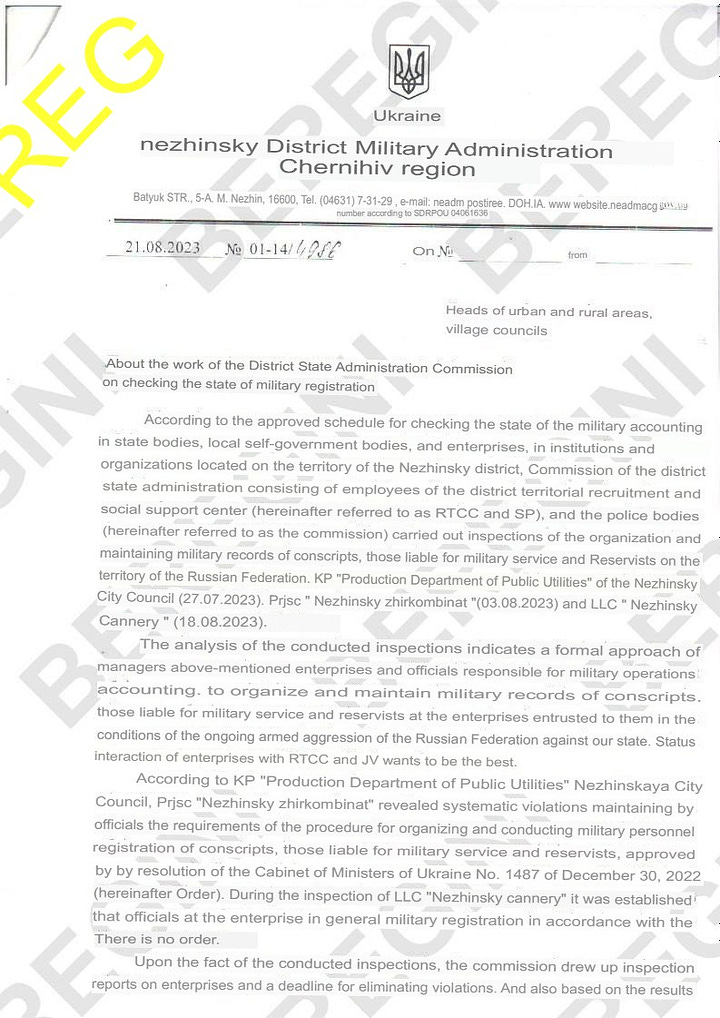
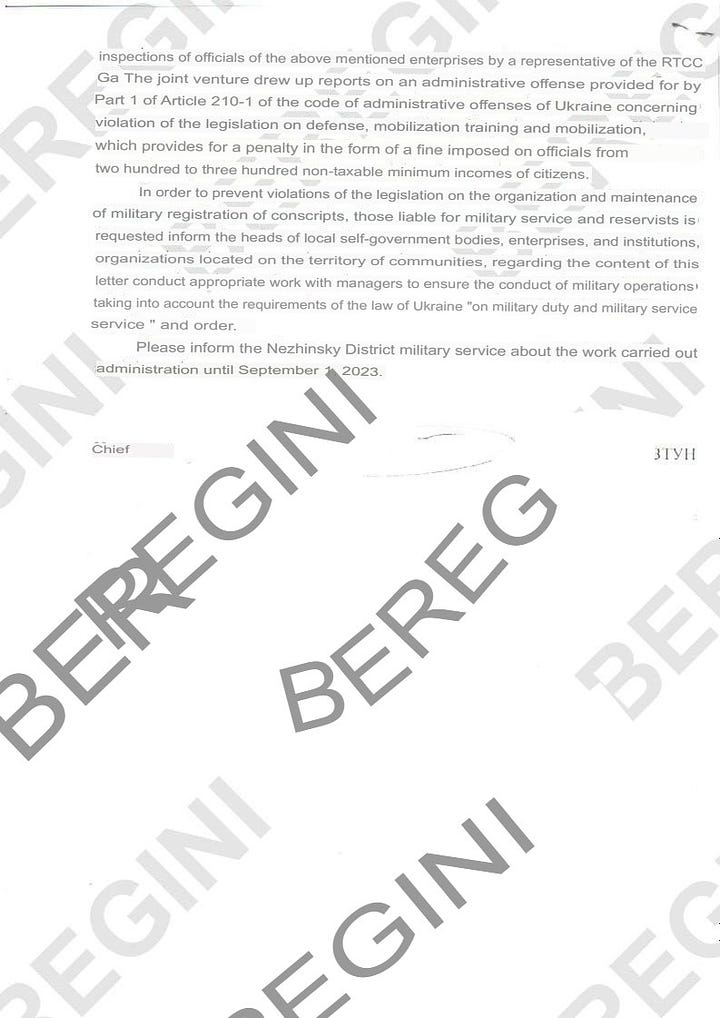
I already covered it at length in the last article, but this does remain one of the few key developments.
They do not plan to hold elections, but mobilization is already running.
Ukrainian sources write that the Office of the President agreed with the plans and methods of a new wave of mobilization requested by the General Staff. During the fall, 200,000 Ukrainians should be drafted into the ranks of the Armed Forces of Ukraine, and another 300,000 people are planned to be caught in the winter-spring.
According to the above, they will have a target of drafting 200k men for the fall and upwards of another 300k for the winter. Keep in mind, as mentioned last time, there are repeated reports that Ukraine is currently bleeding 10k men per month. So just to break even, they need to scrounge up 10k from the streets.
How is that? Well, for instance, we have new reports from Ukrainian sources like the following which states that Ukraine is losing 200-500 dead and 500-1500 wounded per day. Reportedly this was in reference only to the Rabotino front, it doesn’t even count the losses from other fronts like Kharkov:
Granted this was posted on August 18th when perhaps things were slightly more high-intensity, but 500 dead per day x 30 days = 15,000 per month. Split the difference but add other fronts and you can start to understand the earlier 10k monthly replenishment cost. Thus to get 200k or even 300k they’d have to really push mobilization to new heights.
For those who may doubt such numbers from the Rabotino front, here’s also a little primer on what forces are arrayed there:
💥💥💥The number of troops that the Ukrainian army attracted in three months to capture half of Rabotino village:
33rd Independent Mechanised Brigade (OMBr)
47th UMBR
65th UMBR
78th Independent Material Support Battalion
73rd Maritime Special Operations Centre
10th Army Corps:
116th OMbr
117th UMBR
118th UMBR
Maroon Tactical Group:
46th Independent Airmobile Brigade
71st Independent Jaeger Brigade
82nd Independent Airborne Assault Brigade
132nd Independent Reconnaissance Battalion
14th UMBR
15th UMBR
3rd Operational Brigade of the National Guard
Foreign mercenaries and NATO special forces.
Thus, 60,000 personnel were involved in the capture of one village, of which half were lost, along with hundreds of pieces of equipment.
NATO's understanding of war and tactical skills have brought Ukraine to this situation, and the ending will be even sadder for the Khohols, but more salutary for all.💥💥💥
And another detailed post which describes which Russian units and formations are opposing them:
"Who is fighting against whom near Rabotino
At the forefront of the Ukrainian attack is the 82nd separate airborne assault brigade of Khokhol under the command of Lieutenant Colonel Pavel Raziedinov. Armament: American Stryker, British Challenger 2 and German Marder I.
The attacking Ukrainian group "Tavria" of General Tarnavsky is reinforced with reserves, which allowed the UAF to gain a numerical advantage of 4:1, in armored vehicles and artillery 3:1.
An unpleasant ratio, therefore, the Russian 58th Army, regiments of the 42nd Guards Mechanized Rifle Division, supported by marine soldiers from the 810th Marine Brigade and the 22nd Special Forces Brigade, began to retreat.
In connection with Khokhol's attempts to introduce additional units of the 46th Separate Airmobile Brigade and the 118th Mechanized Brigade, which are opposed by our 22nd Special Forces Brigade and four battalions of Bars-1, Bars-11, Bars-3 and Bars-14 "Sarmat" also began to withdraw to the east.
The 76th Guards Airborne Division was transferred to reinforce from the Serebryansky Forest. An extremely toothy unit, the commander of which received the Hero of Russia for crossing the Kakhova dam. Back then, on February 26, 2022, the paratroopers seized a bridgehead near the Dnieper and repulsed 7 Ukrainian attacks, destroying more than 20 BBM units. Then the division performed well at Kremennaya and Svatovo.
The 1140th Artillery Regiment, the 234th Guards and the 247th Torun Regiment also arrived to help their colleagues.
You can imagine what kind of mowing is going on. About the fact that there are more than 120 units of enemy equipment left in a plot of 6 kilometers, many have already heard."
The important thing to note is that, since the infamous recent “clash” between Zelensky and NATO leadership about wasting and dissipating his forces, there have been reports that Zelensky/Zaluzhny have now attempted to somewhat acquiesce to their masters’ demands. That means reinforcements have been stripped from the Bakhmut/Klescheyevka area and sent down to Rabotino to form an even bigger spearhead.
For Rabotino that was bad news, but the Klescheyevka guys have enjoyed a brief welcome respite and relay that the front has been ‘quiet’ for them after these reorientations.
However, even after all of these expenditures, Russian frontline sources report that Rabotino, while abandoned by them, is still not captured by the AFU and is now in a gray zone from which it may not emerge. One of the reasons is as with Staromayorsk and other towns, it’s now so destroyed that there is not much place to hide. So when AFU units move in they are bombarded by Russian artillery and are quickly forced to flee.
Russia’s fiery ex-general and now-Duma deputy Gurulev openly advocated nuking Rabotino while that huge mass of AFU forces described earlier is “bunched up” in the area:
Similarly on the Staromayork and Urozhayne axis to the east, Pushilin confirms how Ukraine is still not able to control either one of those villages for the same reasons as mentioned above, and are forced to try to circumscribe them to the eastern flanks:
As seen in the Rabotino map posted above, the AFU is trying to do the same there by wrapping around toward Verbove rather than occupying Rabotino.
Austrian military analyst colonel Reisner gave a negative assessment, saying that NATO has never seen such defensive fortifications since the Battle of Kursk:
To bring it back around, even the Bild is reporting on Ukraine’s upcoming mobilization:
With that said, defense minister Reznikov has for now denied plans for a new mobilization, but his word isn’t worth the toilet paper it’s written on.
Could Russia perhaps be waiting to see how many men Ukraine manages to fish up to decide whether they themselves need to do a mobilization? After all, Russia would love to not have to do a mobilization if there’s no need. But were Ukraine to actually fish up 500k men (doubtful) they may have no choice. Ultimately we may see another re-run of last year: where both sides mobilize heavily during the fall and winter to prepare for big spring action.
//
The world is changing fast. The next year or two promises to potentially be the most momentous and eventful of our entire lifetimes. Not only is there an historic American election coming up which may end up culminating in civil war, but the global geopolitical scene is seeing its most significant restructuring in decades.
The African country of Gabon has now become the latest to undergo an anti-colonial coup, and there could be a Russian/Chinese hand at play because the confluence of such events cannot be simple ‘coincidence.’ The Gabonese president issued a desperate plea, begging France and the Western world to save him:
The country’s citizens came out in support of the junta troops:
Now there are reports that Cameroon is set for a coup next, and its leadership is already undergoing an emergency reshuffling of the military upper echelons in order to prevent it.
However, other reports claim that the Gabon coup is just Western imperialists eating their own as the junta leader, according to some, has been groomed by the U.S. and represents American interests:
But why did a pro-American general overthrow a pro-French president?
The leadership of the French intelligence DGSE explains this by the fact that, according to the Americans, the French authorities are no longer able to effectively protect the interests of the collective West, including the United States, in the territory under their control. Therefore, the White House decided to take the situation into their own hands and seize the initiative from the French.
Meanwhile, Niger’s junta has cut off water and supplies to the French consulate which has refused to leave the country, citing that they only take orders from the ‘legitimate’ president.
The fact that these historic movements are coming on the heels of the major BRICS developments means that by this time next year the world will have been reshaped, with Western powers waning like never before.
This is to give a bit of perspective to ongoing events of the Russian SMO. While some may consider progress to be slow, I stand by the position that the events of the SMO are merely the minor backdrop to the real machinations Putin and others are carrying out behind the scenes of the global geopolitical framework.
For instance, Russia has apparently already begun shipping new containers to Saudi Arabia by way of Iran in a new sort of one belt one road:
1) When Egypt joins BRICS the Suez Canal, one of the most important trade routes will be, will be essentially under their influence.
2) In addition, a second transport corridor Iran has been launched.
The first transit train of 36 containers with cargo entered Iran through the Inche-Burun border checkpoint. Then the goods went to the Iranian port of Bandar Abbas to be sent by sea to the port of Jeddah.
The new logistics route makes transportation from Russia to Asian countries twice as fast and also cheaper. India has invested about $2.1 billion in the project, but some of the cargo will go to other countries, including Saudi Arabia.
The North-South transport corridor project was developed back in 2000 as an alternative to deliveries through the Suez Canal.
The West is now in a lose-lose situation. Even if they back an ECOWAS military action against Niger or others, for instance, they will expose major hypocrisy not only to African countries but to the rest of the world which will merely bring down the West’s standing even more, push further countries to disconnect from them and join the new multipolar order. Not only will the West show their naked colonialism but it will be brought to light how they hypocritically back military action against a sovereign nation in Africa while condemning the same exact action in Ukraine. Recall that Russia’s actions can be viewed as an intervention of an illegal coup which ousted the democratically elected Ukrainian leader; how could the West condemn the coup in Africa and support its reversal via military action while supporting the coup in Ukraine while condemning the military action to reverse the coup there?
Further movements continue around the world:
Asia’s next step away from dollar
Vietnam, the Philippines and Brunei will join other major Southeast Asian economies in an interconnected QR code payment system that aims to reduce reliance on the US dollar - Nikkei reported. (https://asia.nikkei.com/Economy/Vietnam-Philippines-and-Brunei-to-join-cross-border-QR-payment-scheme)
Indonesia, Thailand, Malaysia and Singapore have previously joined the same initiative.
Payments through the system will be made in local currency, meaning payments in Thailand using the Indonesian app will be directly exchanged into rupiahs and baht, bypassing the US dollar as an intermediary.
Next, the central banks will seek to link this network with other regional clusters around the world, and bring the same structure to real-time bank transfers and even central bank digital currencies eventually.
Here is one analyst’s interesting take on what actions the desperate West is taking as a last gasp to hang on to their slipping power. He believes they are shifting to a form of ‘meta-colonialism’ or ultra-regionalization of the entire globe, and gives a prescription for how that can be countered by Russia:
***
More and more often, under the pretext of anti-colonial struggle, the West offers all sorts of divisions of historical states.
They would llike to break up countries such as Iran, China, Russia, India, etc.
The old colonial principle - "divide and rule" has not gone away.
After the decline of colonialism and neo-colonialism, the West is preparing for "meta-colonialism".
They want destruction and regionalization for the entire territory of the earth, while remaining a relatively large political entity. They are shifting their Eastern Sanitary Cardon to our historical lands, squeezing us out of Europe.
Their algorithm: a large state - the United States> a medium state France> a small state Poland> a trifle Latvia> a stateless region of Ingermanland and so on.
This is their view of the 21st century. And what can we oppose to metacolonialism? What should the world map look like from our point of view?
The only salvation for us will be consolidation and empire building. Our world map should look like this.
1. Russian Union - from Brest to Vladivostok (Belarus, Russia, Ukraine, Kazakhstan)
2. Transfer of the cordon sanitaire between us and the West to the territory of Eastern and Southern Europe.
3. Creation of large friendly Slavic states on the territory of the historical settlement of the Slavs! That is large federal states.
4. Greater Yugoslavia (former Yugoslavia + Bulgaria + Macedonia + Romania) anchored around Serbia.
5. Great Western Slavia (former GDR + Poland + Czechoslovakia + Hungary + Western Ukraine and Transcarpathia) based on Hungarians, East Germans and ... Poles, no wonder.
6. Regionalization of Western Europe and the West as a whole. Bavaria, Languedoc, Galicia, Scotland, Piedmont and the Republic of Texas.
Only such a construction will save the world from metacolonialism. Will establish lasting peace and tranquility on our continent.
Are you saying this is just a dream? Dreams Come True. In 50 years, the map will look exactly like this.
Recall the NATO-linked madman Fehlinger whose calls to break up Brazil I posted last time:
I’m not sure I agree that the eastern powers will push for or achieve the same balkanization of the West as the West attempts to do on them, however certainly anyone can see that the power center is shifting rapidly and drastically to the East.
When you add all the latest developments up, it spells doom for the West. The problem with the West is they have always subsisted on the natural resources, and later the manufacturing, of others as they slowly transitioned into developed service economies. In order to achieve this they had to keep all the developing natural-resource-rich nations under their thumb. It’s fascinating to see how many imperialist rodents scurry out when you shake the ship. For instance, as soon as the Gabon coup happened, reports immediately came of French workers for the Total oil conglomerate sent fleeing from the country, as well as disruptions for French mining corp Eramet. The vast imperialist overreach of the West has subsisted under our noses, blended into the environment and some are only now discovering how completely they pervaded the African continent. Every African nation is overrun with Western militaries, Western big oil conglomerates, etc.
It’s why now the dying West is desperately scrambling to pick apart Ukraine like vultures on roadkill:
France apparently even begged or coerced India into vetoing Algeria at the BRICS summit. They’re terrified of losing more:
A small consolation and victory for them, but nothing compared to what they are currently losing and what BRICS has gained in general. At next year’s summit it will only grow and perhaps by then Algeria will have joined despite the kvetching of the increasingly-irrelevant West.
In fact Rybar reports that now the Balkans are beginning to signal interest in joining the BRICS:
Against the background of statements about the expansion of the international organization following the recent summit in Johannesburg, there were calls for accession from the Balkan Peninsula.
▪️ The Serbian party "Movement of Socialists" recently proposed to start working on joining the BRICS. Its deputies will send a draft resolution to parliament, according to which BRICS membership will become for Serbia "a clear alternative to the so-called path to the European Union." The party is in a coalition with the ruling Serbian Progressive Party (SNS) and is led by Alexander Vulin, who also heads the intelligence department of the BIA.
▪️ Following Vulin, who recently added to the US sanctions list due to his unconcealed pro-Russian position and Euroskepticism, the president of the Republika Srpska, an entity within Bosnia and Herzegovina, also called (https://t.me/rtbalkan_ru/2366) for joining the BRICS.
According to Milorad Dodik, from Brussels is constantly coming up with new and unclear conditions for joining the EU. “The BRICS will accept us earlier than the EU,” the leader of the Bosnian Serbs mocked and promised to send a proposal to the authorities of Bosnia and Herzegovina to consider the initiative in the coming days.
🔻 However, Serbia and the Republika Srpska are far from the only ones in the former Yugoslavia who are outraged by the protracted process of European integration. The forum "Solidarity for Global Security" was recently held on the picturesque Slovenian Lake Bled. European Council President Charles Michel has pledged to welcome new EU members by 2030, but statements by Balkan leaders are a pretty clear indication of the level of general skepticism.
▪️ As Serbian Prime Minister Ana Brnabic so aptly put it, “the boundaries of the goal to score a goal” are constantly shifting. Albanian Prime Minister Edi Rama, commenting on the protracted process of European integration, tried to be even more witty. “We seem to be dragging ourselves in a bus, but still it is preferable to a Russian plane.” A colleague of Rama and Brnabic from North Macedonia cited opinion polls, according to which the number of citizens opposed to joining the EU has already reached 80% of the country's population.
Approximately the same indicators were obtained by sociologists as a result of recent polls in Serbia, and the number of eurosceptics is growing every day. So the issue of holding a referendum on joining the BRICS no longer seems like a fantasy of dreamers and may well become a reality in the foreseeable future.
Now Putin has agreed to intend a major belt and road forum in China in October which will further solidify developments:
For those interested, in light of the West’s soon lost Ukrainian adventure, Pepe Escobar has a new article on where the next “great game” for Western powers will converge. In his opinion, it is central Asia, namely Kazakhstan. One can see how deeply the West’s claws are embedded in that resource-rich country:
Like I said, things are now moving fast as the West scrambles in panic to cling on.
//
A few last disparate items.
Russian Lt. General Viktor Sobolev said that Wagner will ‘cease to exist’:
🇷🇺‼️”The Wagner Group will cease to exist. The fighters will be able to go into civilian life or sign a contract with the Ministry of defense.” —Lieutenant General Viktor Sobolev.
“This is an illegal armed formation <…> There should not be any armed people in the state who are not subordinate to the state.
As a result, this led to a rebellion. We were on the verge of a civil war,” said the State Duma deputy.
He also clarified that only those Wagnerites who did not participate in the rebellion can sign a contract with the Ministry of Defense
This comes at an interesting time when rumors still swirl about everything in relation to Wagner. The West continues to fan crazy theories:
But then at times they don’t sound so crazy, like today when a Wagner-affiliated channel released a video showing Prigozhin reportedly on August 20th in Africa, mere days before his fateful flight back to Moscow where he later died. In the video he unsettlingly reflects upon his “liquidation”:
Given that he’s a man predisposed to disguises and trickery of every sort, can it really be considered far-fetched that perhaps his putative death is not as it seems? After all, many remarked there was something “off” about his swiftly-held and covered up funeral in St. Petersburg, which saw relatively few attendees. Not to mention that the crash site of the plane was said to have had its soil removed by bulldozers.
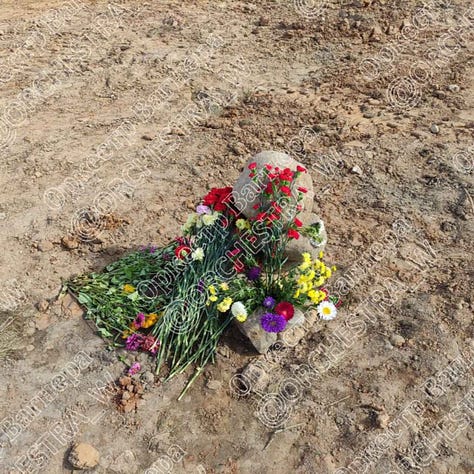


"This is how the crash site of Yevgeny Prigozhin's plane looks now. For some reason, all the soil was removed by bulldozers and taken out"
There have already been reports of Prigozhin sightings in Mali, almost certainly fake of course. But recall that Prigozhin had actually been similarly declared dead in another 2019 plane crash in the Congo, later resurfacing alive. The conflict has seen some of the strangest twists and turns of our time—I won’t be surprised to see things take another bizarre twist down the line.
For those interested in the closure of the saga:
The leader of the Wagner Private Military Company, Evgeny Prigozhin, has been laid to rest at the Porokhovskoye cemetery in St. Petersburg.
The funeral ceremony was held behind closed doors, with only close relatives and friends of Prigozhin in attendance.
The plaque at his grave is a passage taken from a Brodsky poem:


"..Mother says to Christ:
- Are you my son or my God? You are nailed to the cross. How will I go home? How I will step over the threshold without understanding, without deciding if you are my son or God. Are you dead or alive?
He tells her back:
- dead or alive, no difference. Son or God, I am yours"...
🙏🏼🕯️❤️
Utkin is said to be buried later today August 31st, at the national Mytishchi memorial cemetery in Moscow—after all, he was an actual decorated Russian servicemen prior to his Wagner tenure.
American politicians continue to express the position that using Ukrainians as cannonfodder to fight Russia without having to risk American troops is ideal, and is the real reason for the war:
Meanwhile, on the topic of quite repulsive Western views, we have the continued characterization of terror strikes on Moscow as acceptable:
For a U.S. newspaper to literally post a photo of a skyscraper damaged by a kamikaze strike along with a positive or accepting headline is just the pinnacle of hypocrisy.
But what can you expect from these people?
Next:
While Ukraine gloats over hitting some empty planes, Russia has actually effected serious attrition on Ukrainian pilots recently. There’s been a spate of shoot downs with a lot of pilots lost:
One version is that a Russian Su-35 shot down two of the Mi-8s at once. This is for those people who claim Russian airpower isn’t patrolling/operating or trying to shoot down the feeble remains of UA’s airpower.
This comes only two days after the news that some Ukrainian stunt in the west of the country caused 3 notable and decorated pilots to be killed when their trainer L-39 planes crashed into each other:
Lastly, Chinese people continue to show their support, both overtly and in subtle ways, for the Russian SMO:
🇷🇺🇨🇳China supports Russia!
In Blagoveshchensk, which is on the border with China, residents saw this composition. The most interesting thing is that it was made by the Chinese and shows our side on the other side of the border.
p.s. Substack has announced a new system of payment methods where they are apparently expanding the types of ways you can pay. In the future they intend to have even more options, but for now, if you were one of the people on the fence about subscribing because of the specific credit card autopay feature, read up on their new methods and see if it suits you: https://support.substack.com/hc/en-us/articles/18687769631252
Thanks to all for the continued support!
If you enjoyed the read, I would greatly appreciate if you subscribed to a monthly/yearly pledge to support my work, so that I may continue providing you with detailed, incisive reports like this one.
Alternatively, you can tip here: Tip Jar





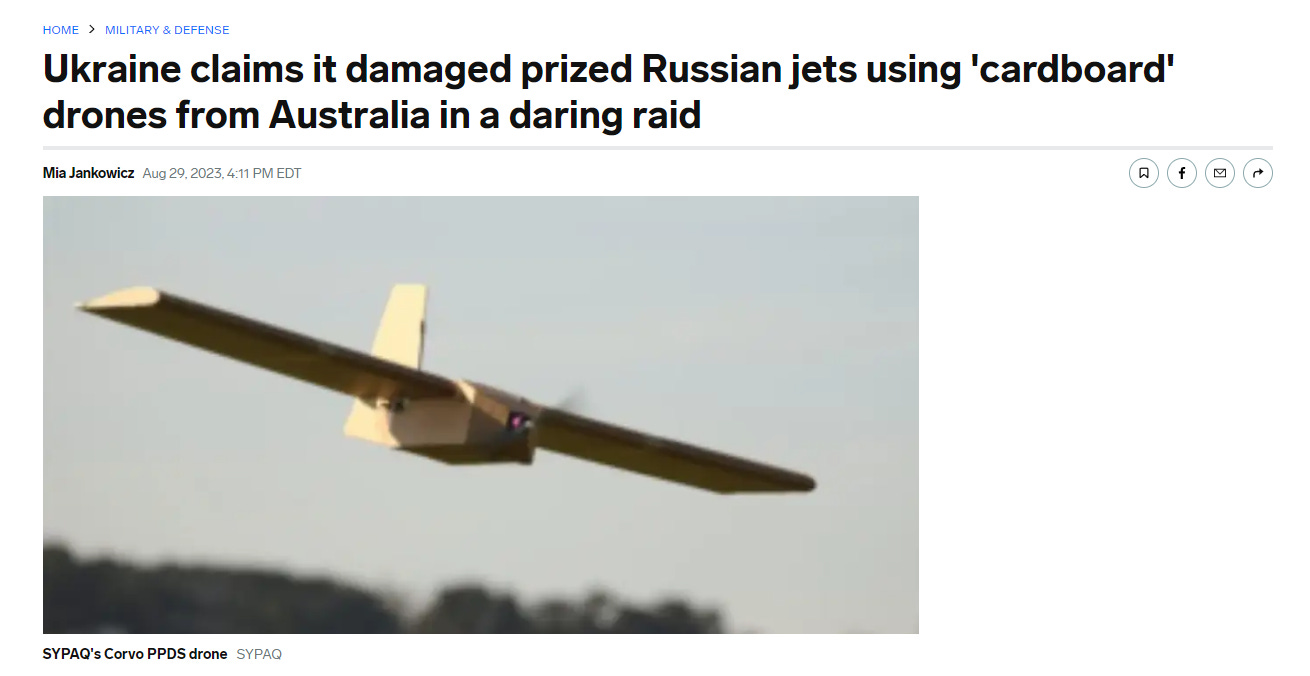

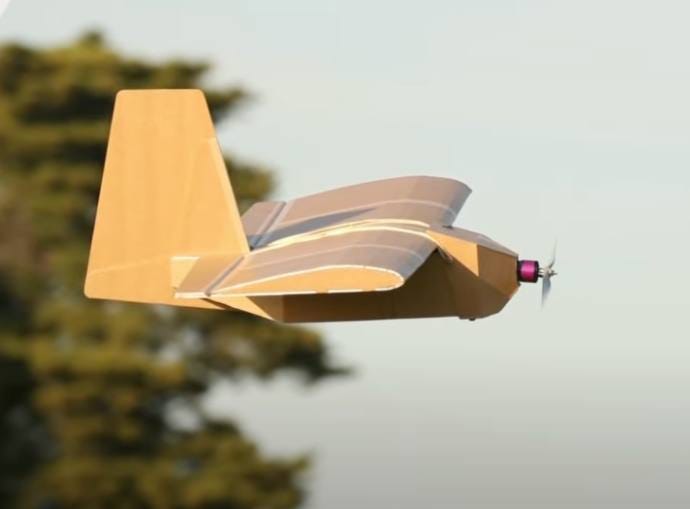
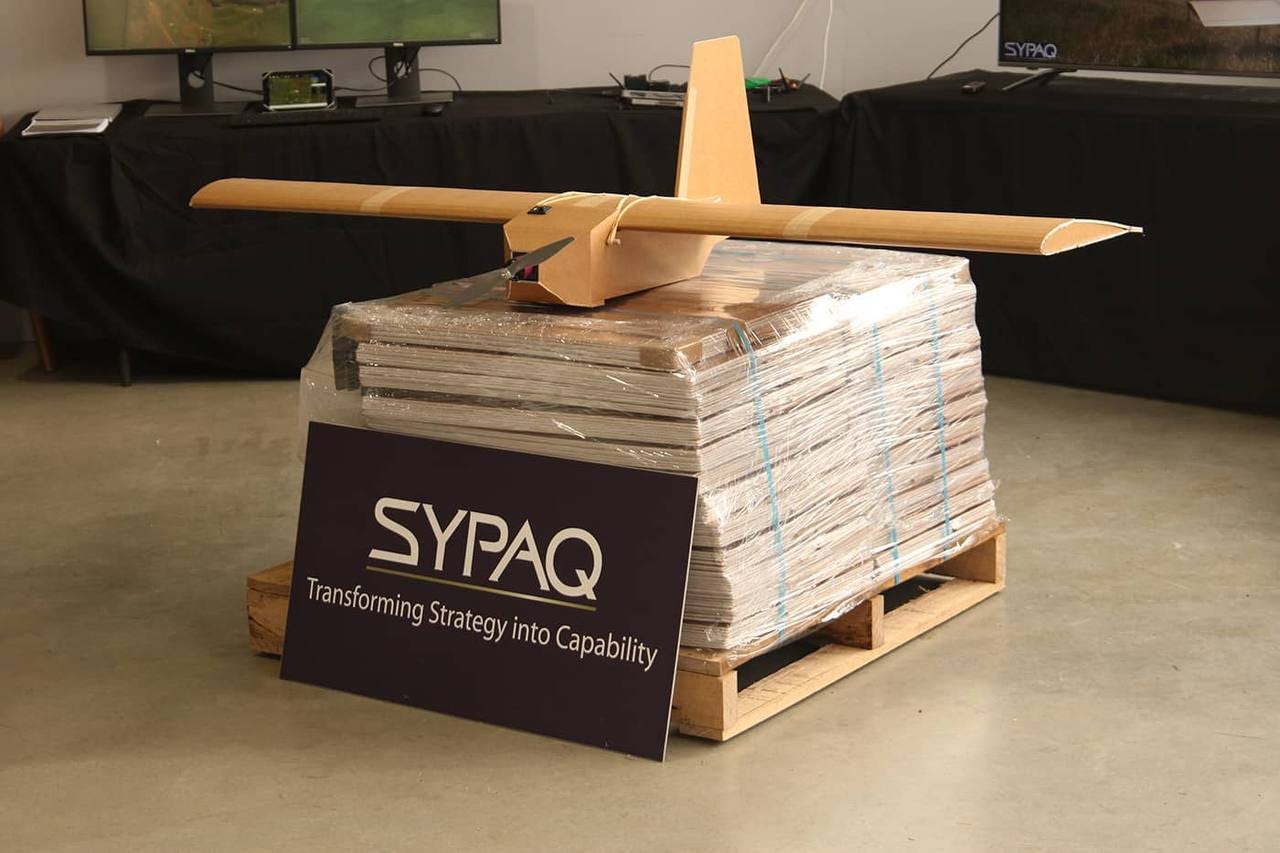
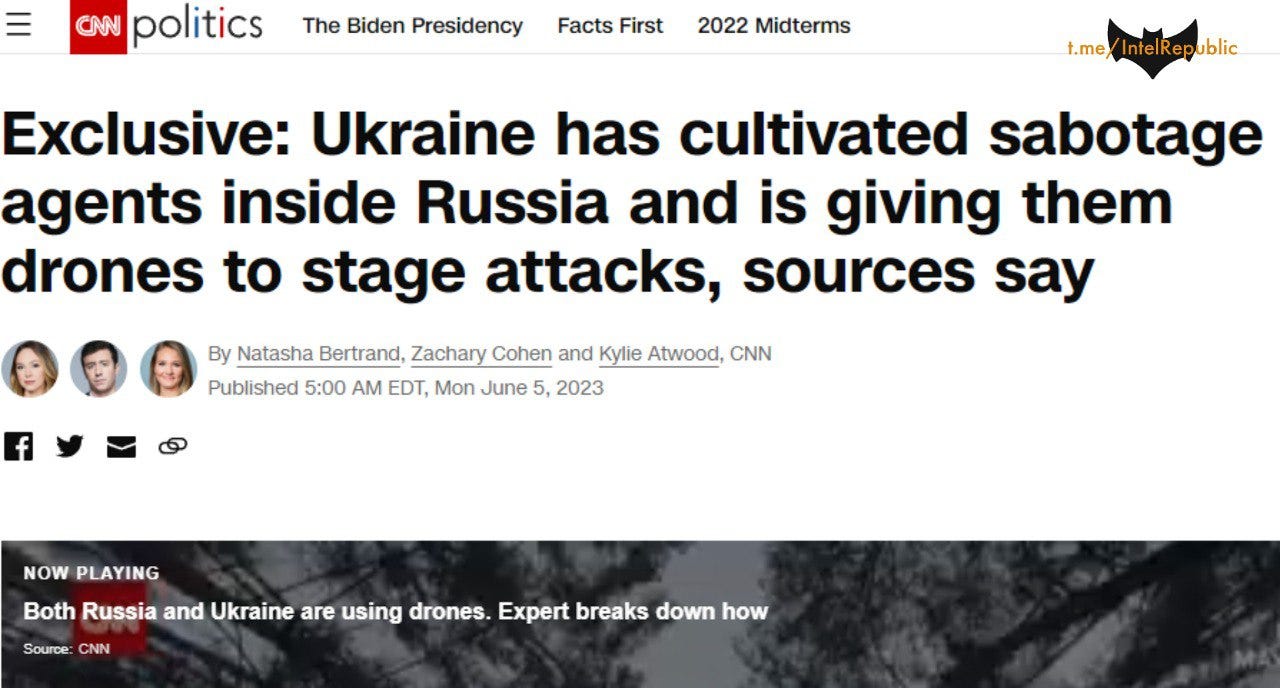
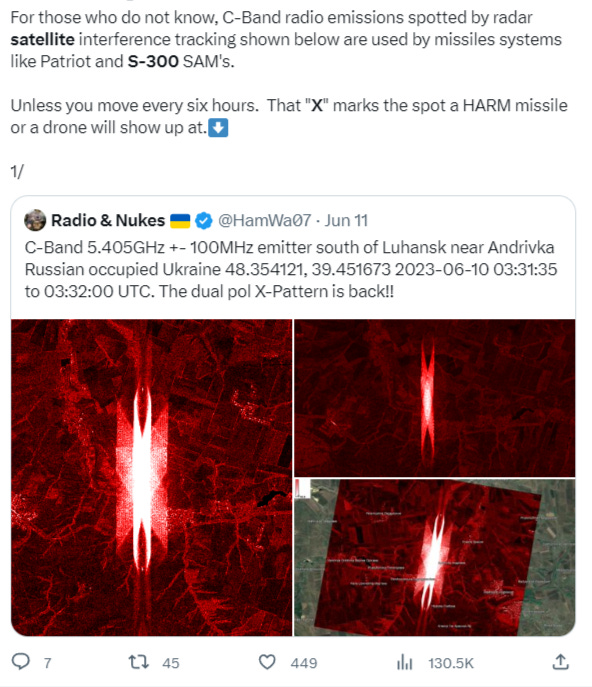
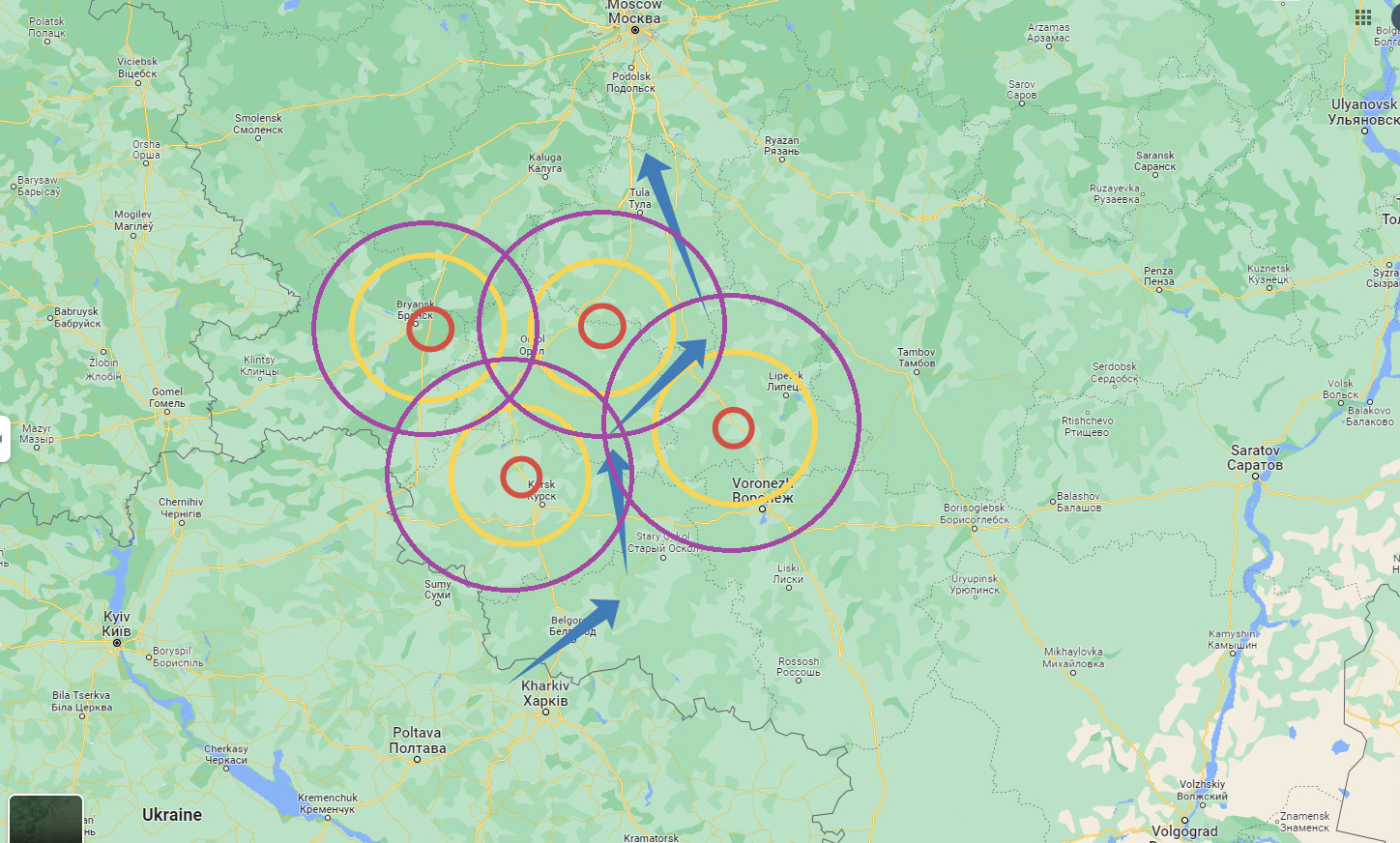

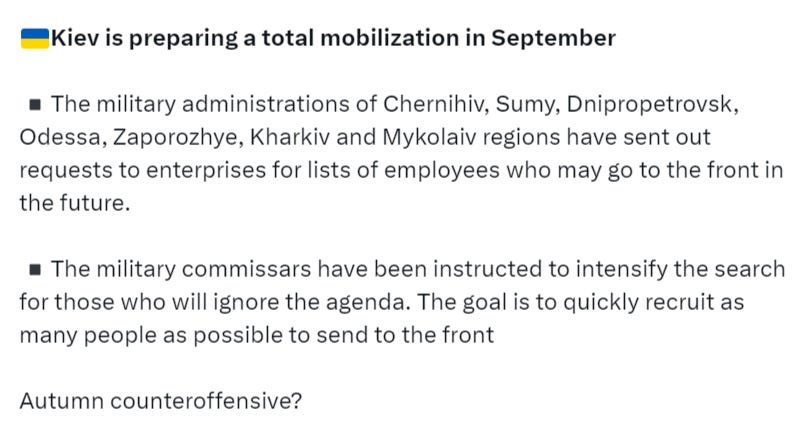
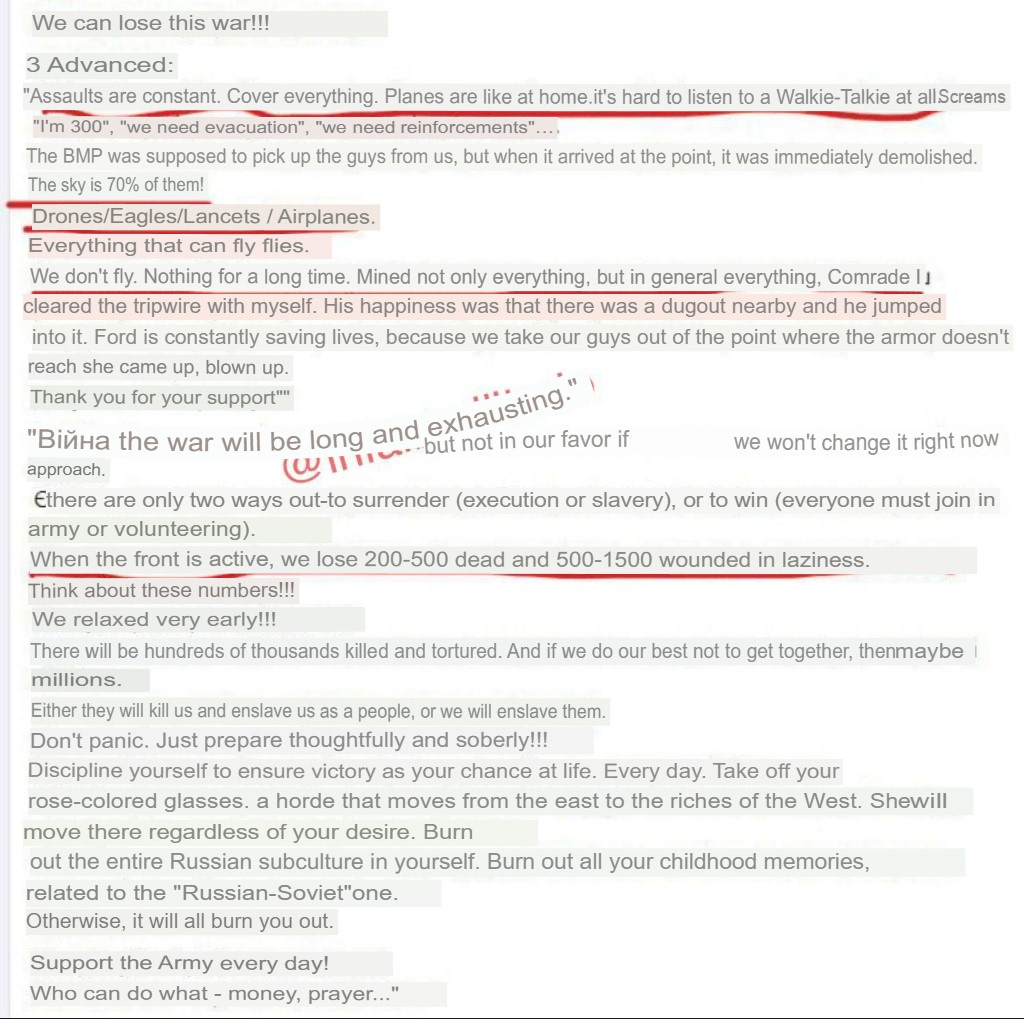
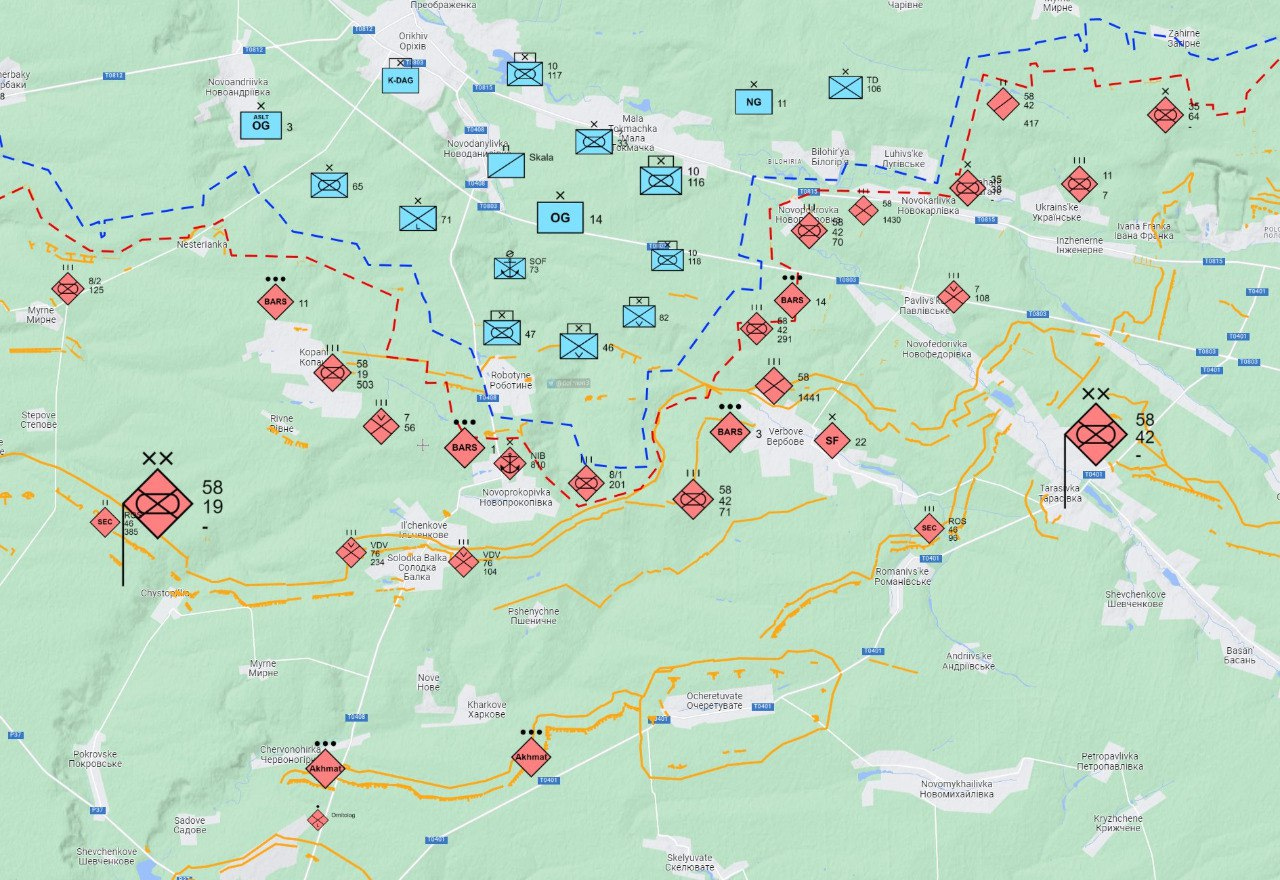
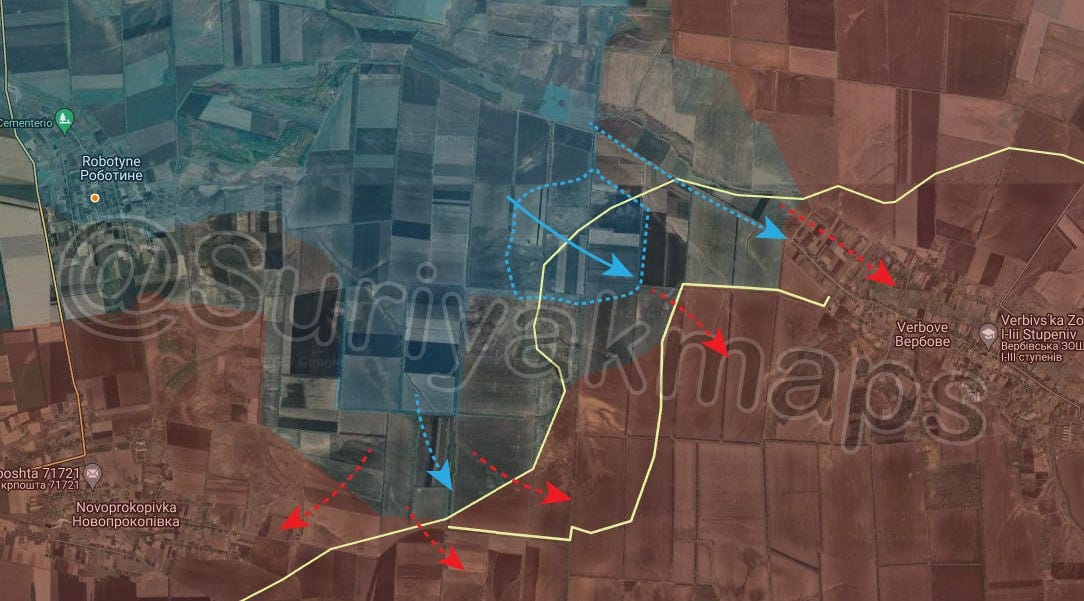
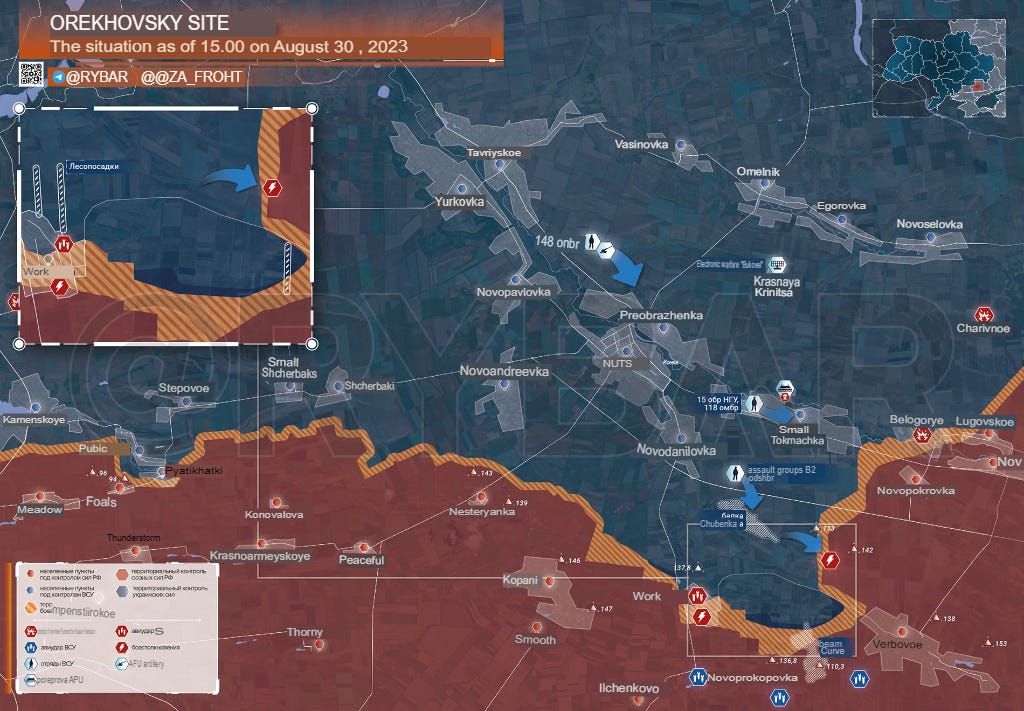

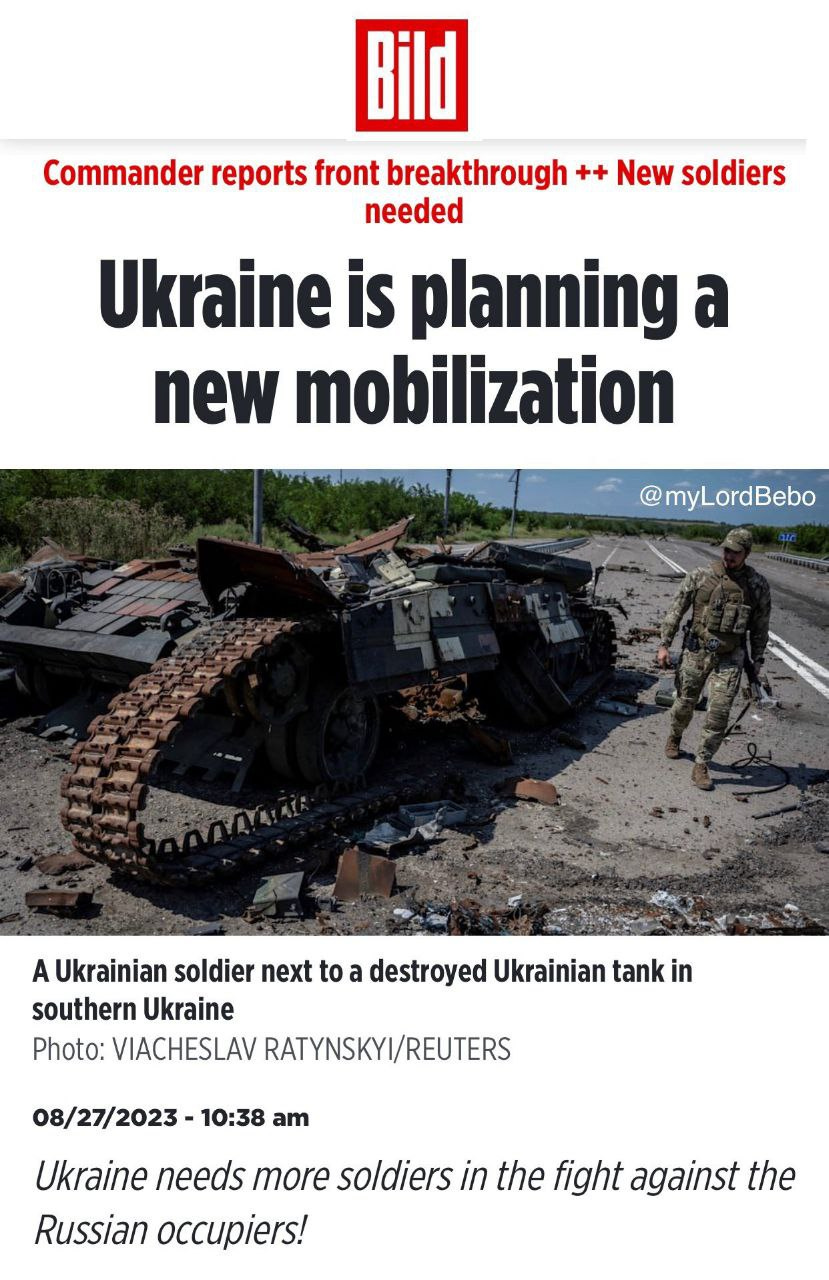
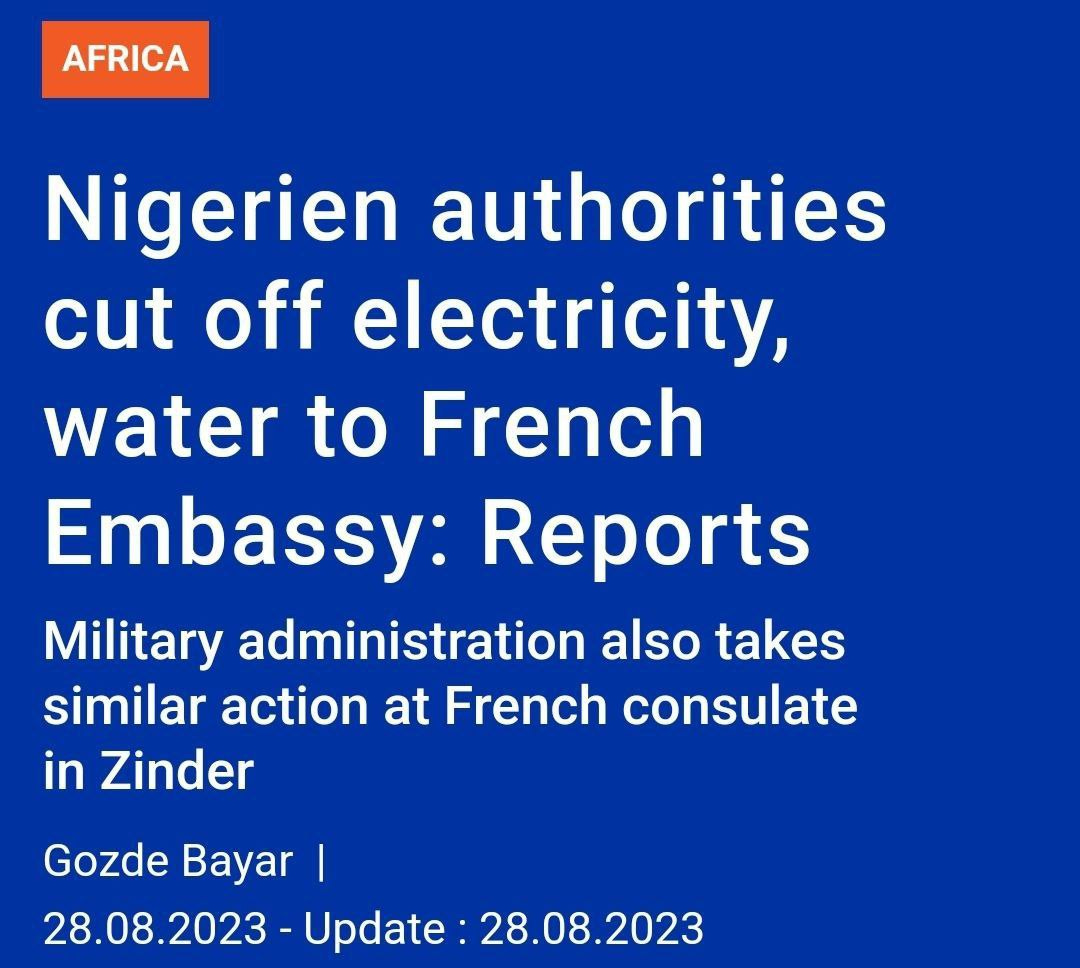

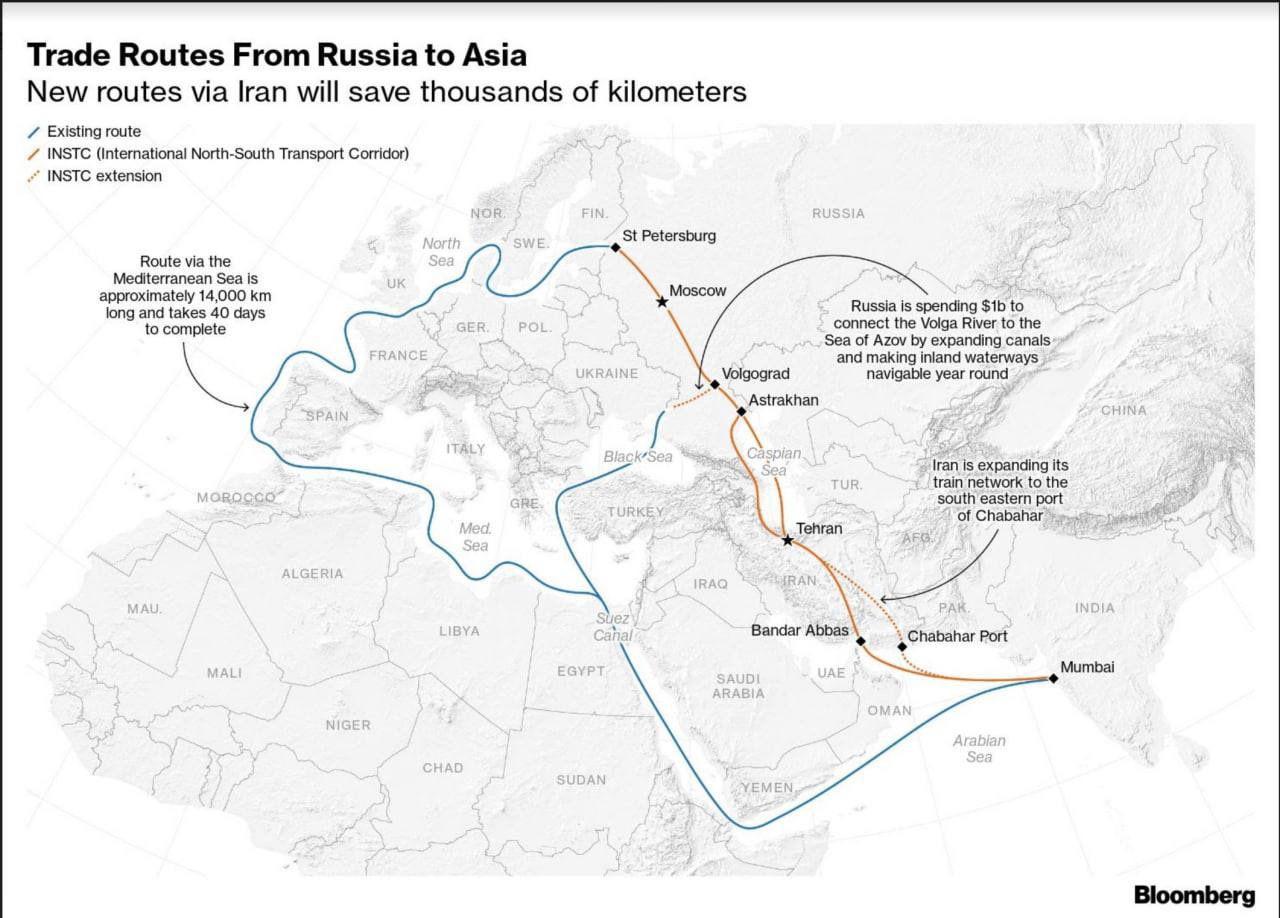

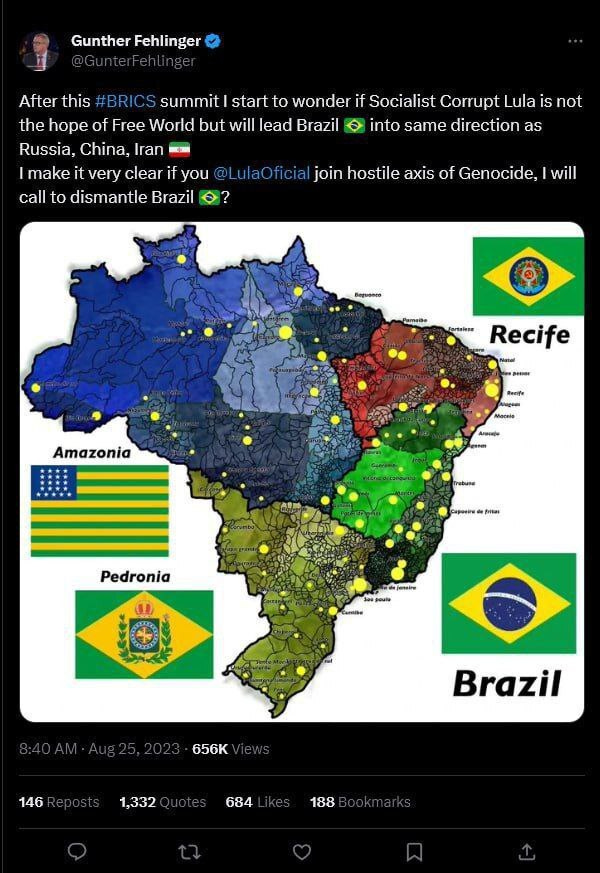
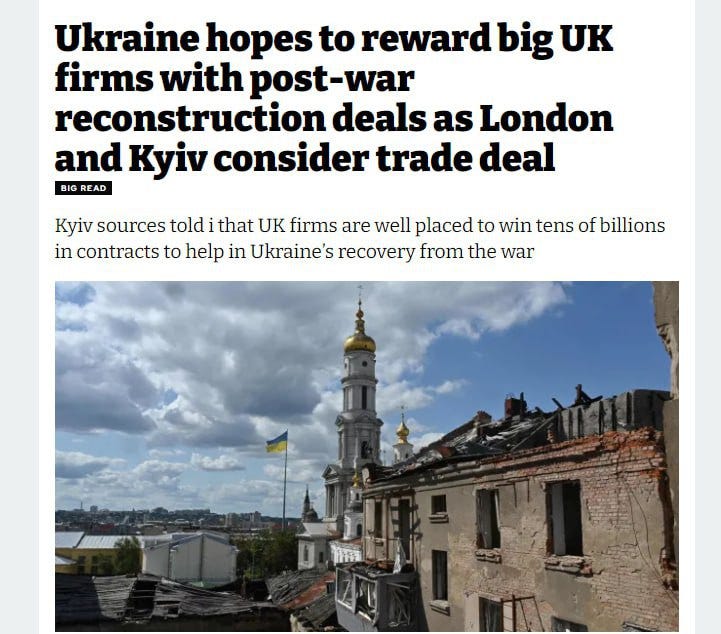
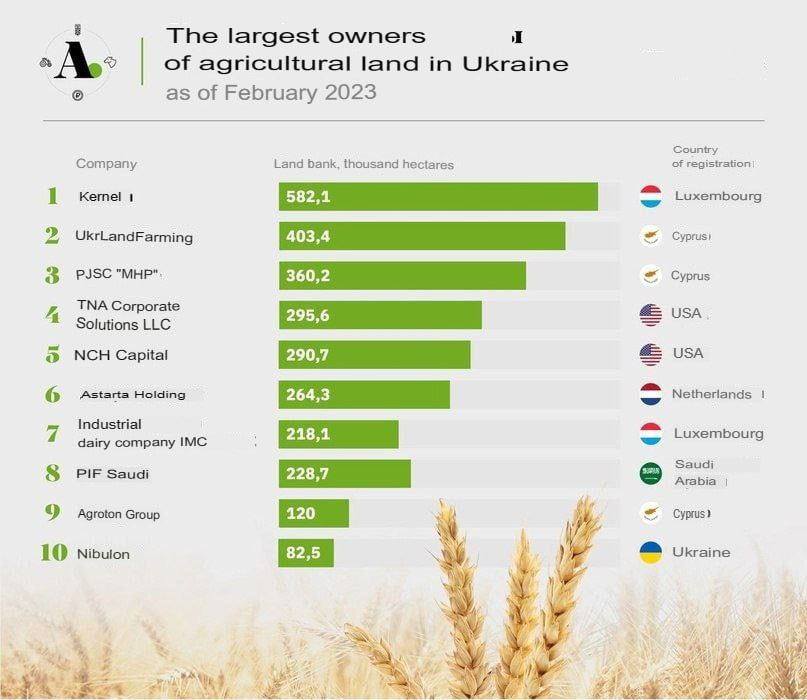
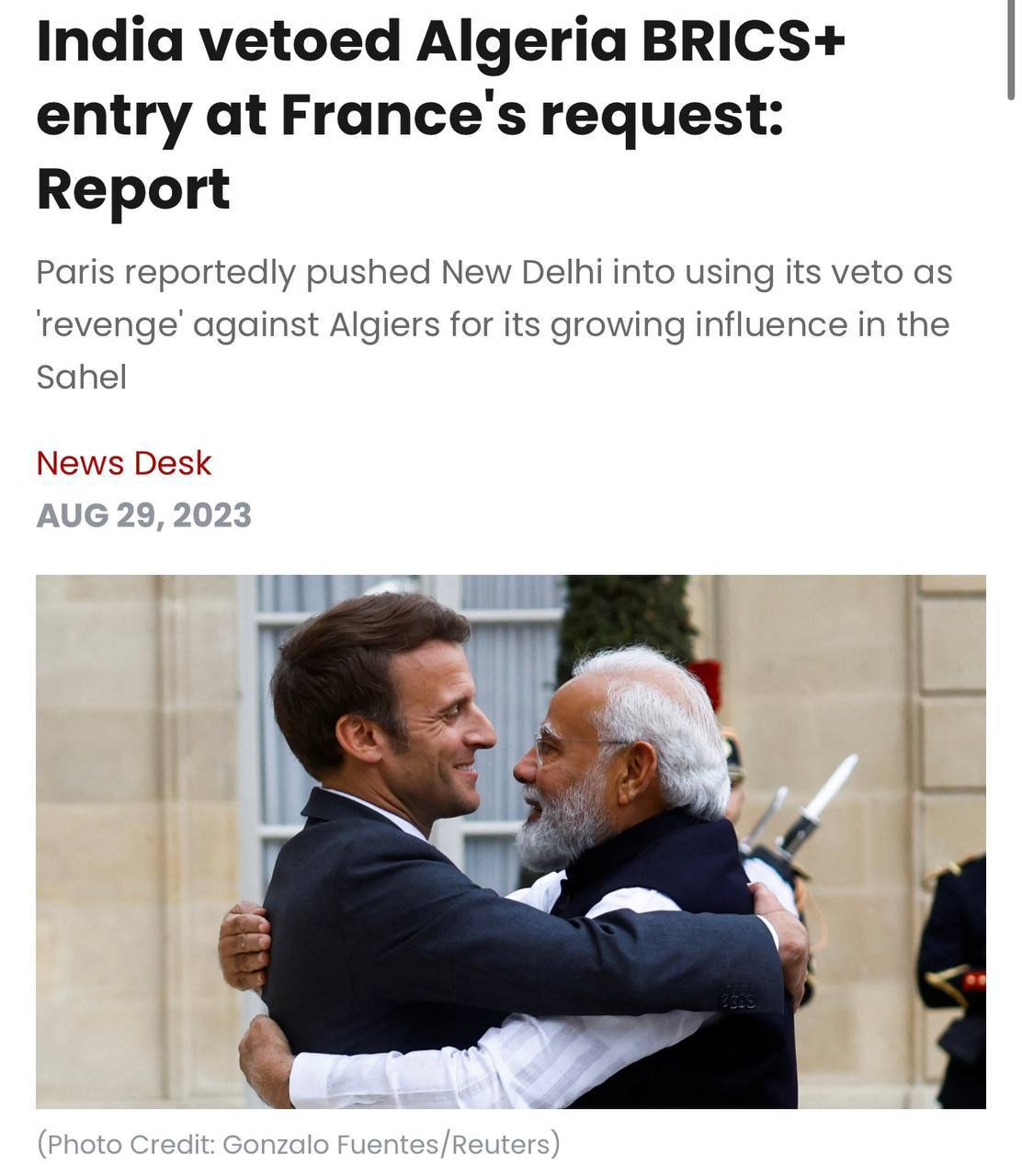


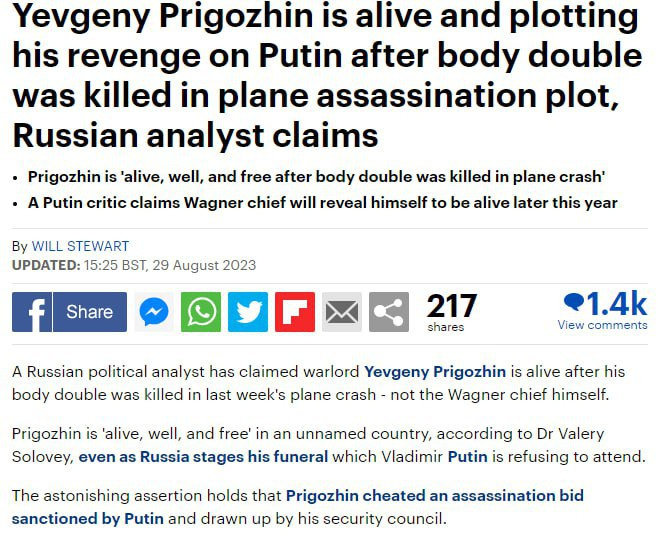
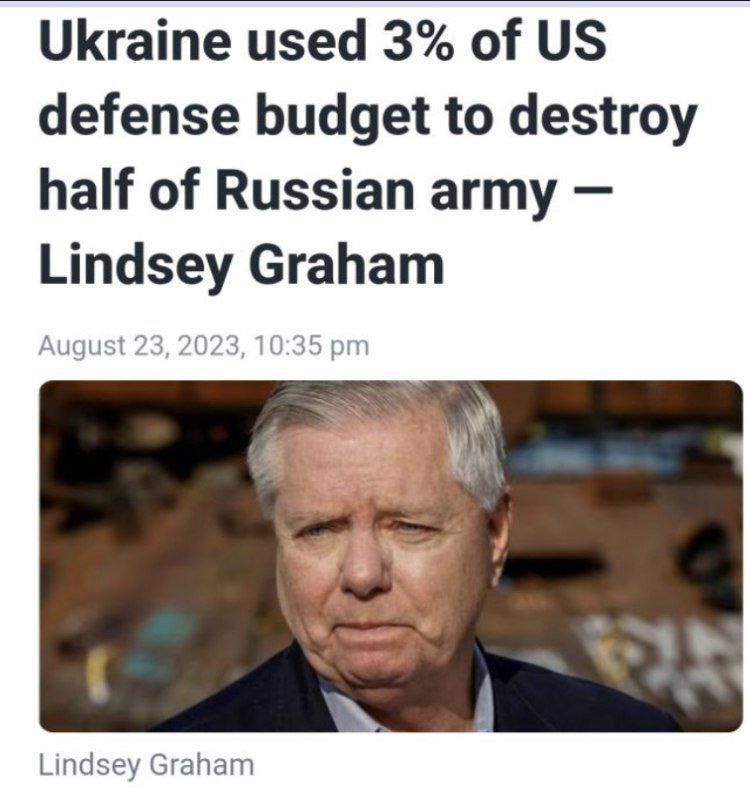
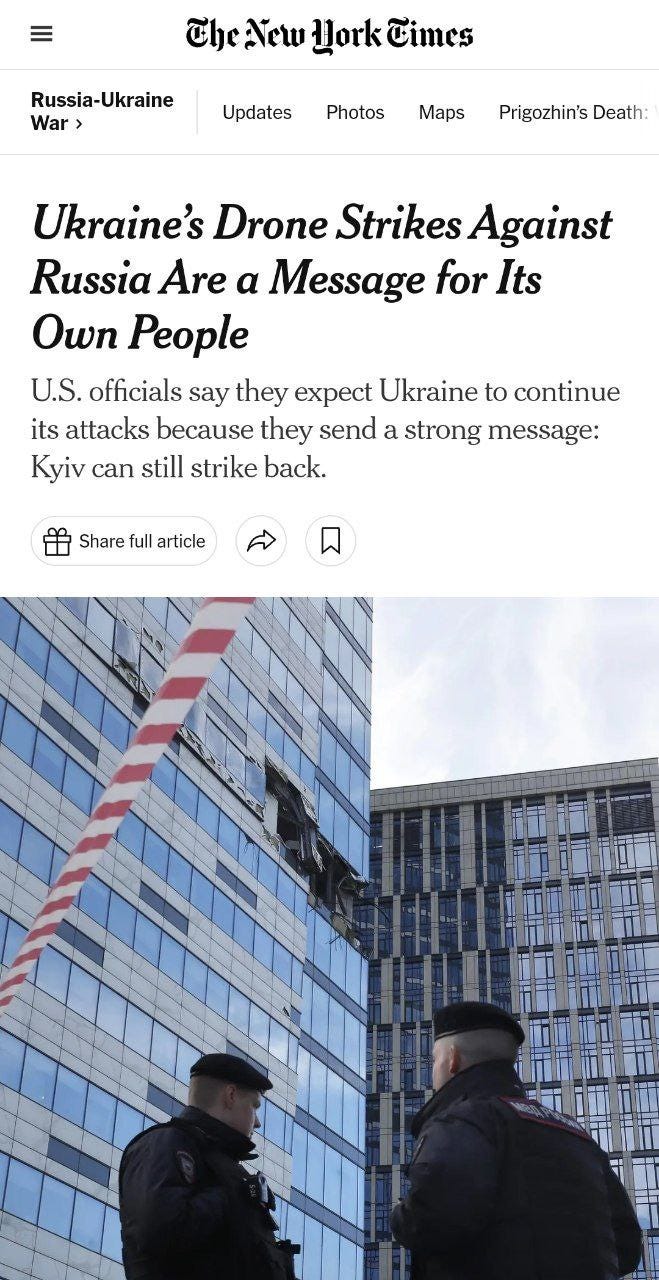

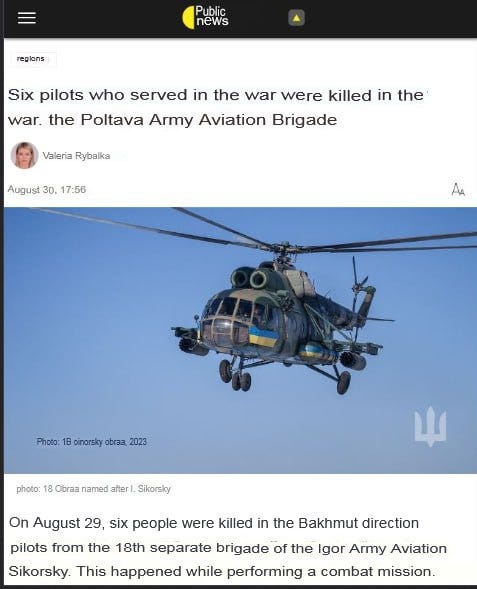
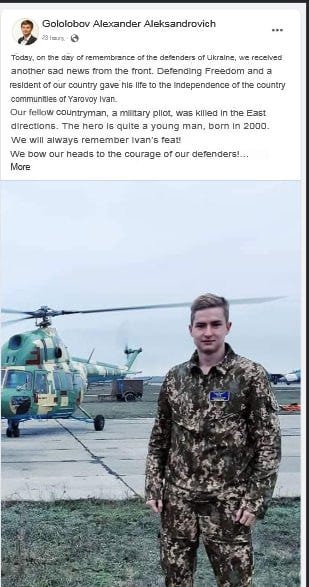
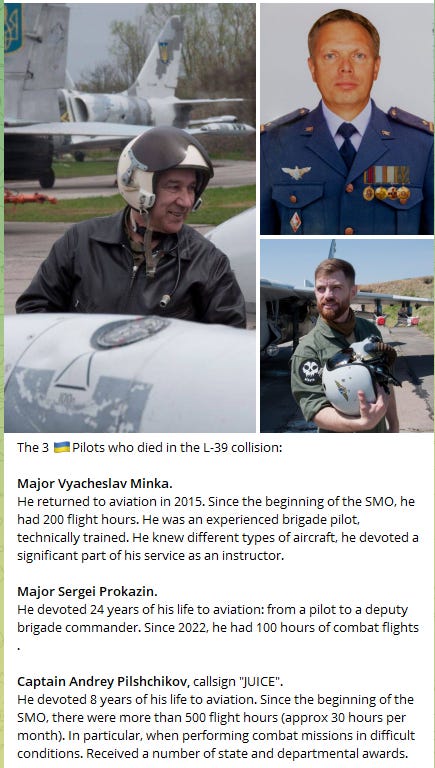
Russia needs to step up its infrastructure attacks in the west of pookraine before winter, give the poles a few million more welfare recipients to support.
It also needs to arrange an accident for that italian ship if that was involved in the airport attacks, and then say "it wasnt us". Also, send wagners one by one on a european tour and arrange lots of accidental fires/explosions.
Re: bulldozer scraping soil away - I've got to imagine plane crashes leave all sorts of nasty shit around the place, not the least of which is avgas.
That looks like a functional piece of land, the farmer would want the polluted soil removed asap to stop it all leaching into the groundwater and wrecking an even larger area.